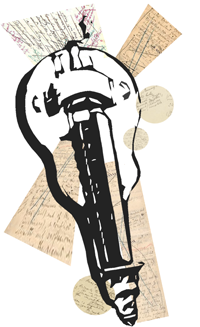I learned how to fold origami from the PBS show ZOOM. Produced in Boston, the show featured kids in striped rugby shirts running around, singing songs, telling awful jokes, teaching you their secret language Ubbi Dubbi, and showing you how to do cool things. Once I got over the trauma of one of the girls having the same name I did, it became one of my favorite shows.
One day the kids demonstrated how to fold a simple paper balloon. When you finished you could inflate the balloon and amaze your friends. I never forgot how to fold that balloon. I taught it to my comp classes and then made them explain the procedure as a writing assignment. For a job interview at Sprint, I was told to make a presentation, so I reviewed the history of origami and then had the interview committee fold the balloon. I was offered the job but turned it down, thankfully; Sprint suffered massive layoffs soon after.
References to origami can be found in the 17th Century, and although normally associated with Japanese culture, it really combines several traditions from many countries. Today, standard origami starts with a square sheet of paper and permits no cuts or glue to complete the object being folded. Instructions use a form of notation to indicate the type of fold to use, such as valley folds, mountain folds, and petal folds.
Beginning in the 1980s, origami became increasingly complex and innovative. Some artists can fold enormous sheets with thousands of folds by wetting the paper, and computer simulations have allowed for ever more intricate designs. Origami has found applications in the medical field for stents, and in space for solar arrays on satellites. Watch the documentary Between the Folds to see stunning origami and to learn about its practitioners.
Today I fold origami to learn patience, to slow down, to meditate. A square of paper transforms into a sculpture; the folds come easier; the object becomes more lovely; the process molds the paper and me into a new creation. Without art, we quietly descend into something less than human. We lose our connection to transcendence and ourselves. Even a lowly piece of paper can save us.






